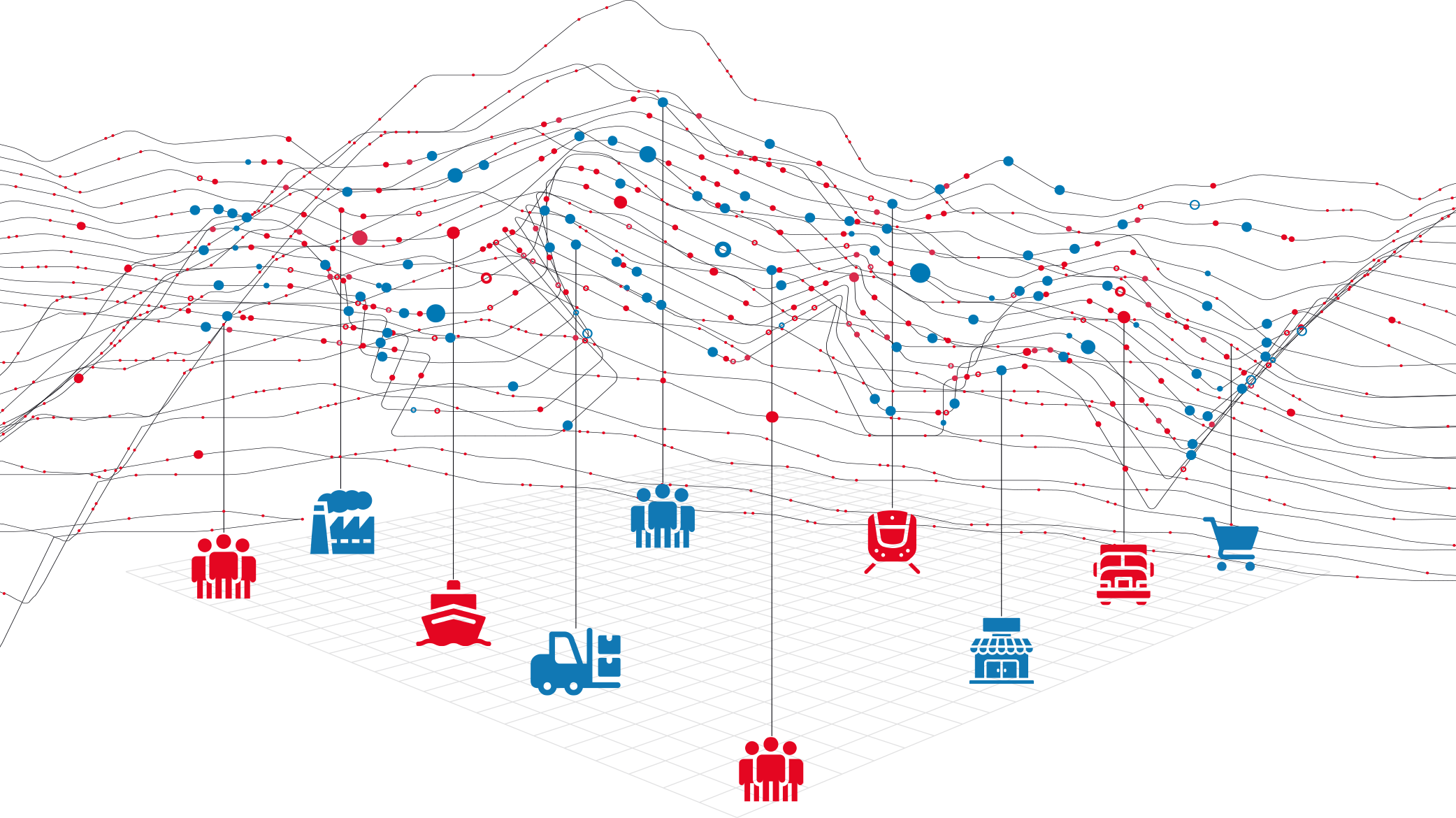Globalized supply system
Global supply chains have weakened under the pressure of unprecedented demand and effective logistics capacity constrained by the Covid-19 pandemic and subsequent lockdowns, and geopolitical tensions exacerbated in recent years.
On average, global container freight rates have more than quadrupled since 2019 and delays have increased. In some strategic trade routes, such as Asia-Europe and Asia-North America, tariff peaks have reached historic highs and delays have become more frequent.
Logistics companies therefore need to shore up their supply chains as much as possible and improve logistics operations and warehouse inventory management to make up for these structural problems. One method that goes in this direction is the organization of collaborative supply chains, which in turn are rooted in the strategic use of big data analysis tools.
Supply chains and inconsistent data
Today, global supply chains are complex compositions that include numerous players on all continents, working together to provide impeccable service to their customers. Often, their operations are disrupted or adversely affected by unforeseen events and disruptions. Supply chain managers work every day to avoid losses of 24% because their company can lose 250 million/year. In 2021, the total cost of supply chain disruptions was about $4 trillion1.
“Improving inventory management is a step in the right direction, but it necessarily involves both a strong focus on inventory management and the use of big data analytics tools.”
For example, in inventory management, it is very important to verify the correctness of inventory in terms of quantity and value. A high density of inconsistencies causes management systems to become unstable in terms of incorrect reporting, false inventory declarations, and wrong decisions. These, in turn, generate cascading effects that ultimately have a not insignificant impact on brand perception and corporate profits.In proper warehouse and logistics management, a key role is played by data: companies do not always have a complete understanding of internally generated data, and as a result do not have a clear and complete view of their operations. This can be caused by redundancy or inconsistency of data2, lack of communication between different departments and teams, or disparate and unconnected systems that generate data silos. As a result, data cannot pass easily from one department to another in the organization. This happens mainly because it is thought that there are no adequate tools to make this vital connection and enable a continuous flow of information.

The solution? Shared and collaborative supply chain platforms.
Great opportunities and huge optimization potential exist if a company can store, aggregate and combine data and then use the results to improve the management of their day-to-day operations using big data analytics tools.
“The main problem for companies is how to choose the right technology stack and approach to create data-driven solutions efficiently.”
Using shared and collaborative platforms is the most congenial solution to manage not only warehouse inventory or logistics operations but the entire supply chain: a single collaborative cloud platform accelerates communication between companies, increasing chain visibility, improving partner relationship effectiveness, and ensuring an optimal customer experience.
If we analyze the main systems used in global supply chains by logistics and transportation companies to track goods, products, processes and information, we see that the recurring elements are as follows:
- ERP (Enterprise Resource Planning):it is a software that allows the integration of information from multiple sources and areas of the company, such as sales, accounting, production, human resources and other departments.
- WMS (Warehouse Management System):it is a software that optimizes material flows within the warehouse. Every movement of goods is recorded in the WMS and transmitted to the ERP.
- TMS (Transport Management System): it is a software for managing transportation fleets; it is used to organize and plan the routes of vehicles and couriers.
The ultimate goal of companies should be to have a digital platform that is able to unify data from these different systems and manage supply chain and logistics network data to execute and plan actions in the most efficient way, gain complete visibility of global processes, make effective decisions, rationalize costs, mitigate risks, and improve service levels.
Conclusions
The global supply chain system is under pressure for different reasons, but they all lead to the conclusion that companies must necessarily improve the management of warehouse inventory and all other processes in the chain with big data analytics tools if they are to navigate this less than fully favorable economic moment and, consequently increase efficiency and profits.
Using a single shared and collaborative supply chain platform is the most efficient solution for all companies that need to manage large amounts of data currently scattered across different systems such as ERP, WMS, TMS.
Notes
1. See the report by GEP titled The business costs of supply chain disruption
2. See the article by BizData ttitled The cost of data redundancy and data inconsistency

